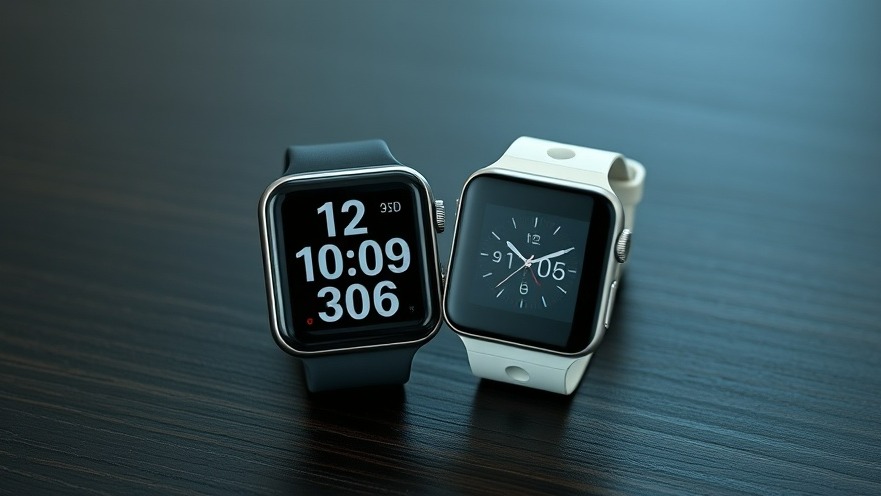
Unraveling Heart Rate Variability: Understanding the Basics
Heart rate variability (HRV) isn’t just another trend in the fitness industry; it’s a crucial measure of your body's stress and recovery status. Unlike traditional heart rate metrics where faster is better, HRV measures the variability in the time interval between heartbeats. A higher HRV indicates a well-balanced autonomic nervous system, which reflects your body’s ability to adapt to stressors and recover effectively. As a digital nomad seeking optimized productivity and personal health, understanding HRV is vital to manage your workload and maintain peak performance.
Comparative Analysis of Leading Wearable Devices
In a recent experiment, I tracked my sleep and recovery using five popular devices: the Apple Watch Series 10, Fitbit Charge 6, Garmin Forerunner 265S, Oura Ring 4, and Whoop 4.0. Each of these wearables brings unique strengths to the table, and they are some of the most trusted names for monitoring HRV and resting heart rate (RHR).
Here’s the breakdown:
Apple Watch Series 10: Known for its multifunctionality, it tracks HRV but tends to report lower than other devices, which can be disorienting.
Fitbit Charge 6: Essential for fitness tracking, it offers a comprehensive view of health metrics, including HRV.
Garmin Forerunner 265S: A dedicated running watch, Garmin tends to synchronize well with user performance metrics.
Oura Ring 4: Often hailed for its accuracy and ease of use, it consistently delivers the highest HRV readings, making it a popular choice.
Whoop 4.0: Centered on recovery tracking, it's designed for serious athletes and provides personalized insights based on HRV.
The Importance of Choosing the Right Device
It’s essential to recognize that while these devices provide comparable measurements, they function differently and may use distinct algorithms for calculations. Picking your tracker should be based on your individual needs and how you plan to integrate the data into your productivity routine. For digital nomads, consistency is key—use the device that best aligns with your lifestyle and goals.
The Results: What Our Experiment Revealed
After two weeks of nightly tracking, the results were striking. Although the raw HRV numbers differed across devices, the trends followed a cohesive story. For instance, Oura consistently recorded the highest values, while the Apple Watch lagged behind. It’s an important reminder that while absolute numbers can vary, they should inform how you gauge your health and recovery over time.
This highlights the need for personalization in managing health metrics. Using a single device long-term is advisable because the relative changes over time will be more telling than comparing device outputs directly.
Utilizing HRV Data for Productivity
Understanding your HRV can profoundly influence your productivity, especially for those frequently on the move. For instance, if your HRV starts to drop and you see a corresponding rise in your resting heart rate, it might be an indicator to take a step back, prioritize rest, or adjust your workload. Tracking this data allows you to make proactive decisions about when to push forward and when to take a break.
Future Prospects: The Evolution of Wearable Tech
As more research points to the benefits of monitoring HRV, the wearable tech landscape will continue to evolve. Expect innovations that not only improve measurement accuracy but also integrate AI to provide more customized insights based on your health trends. This will empower digital nomads with data-driven approaches to health and productivity, offering tailor-made solutions in real-time.
If you’re intrigued by how HRV influences your physical and mental health, investing in a reliable wearable device to track this data could be a game-changer. Choose a device that fits well within your lifestyle and be mindful of the trends that unfold over time. Don’t just focus on the numbers; let them guide you toward better health and enhanced productivity!
 Add Row
Add Row  Add
Add 




Write A Comment